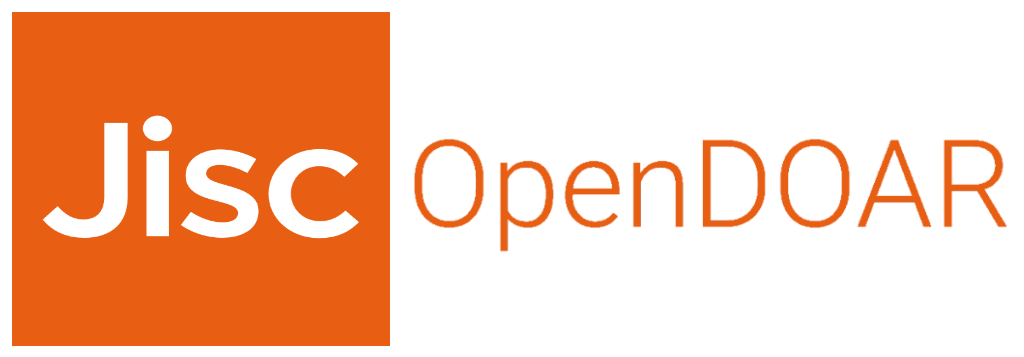Envíos recientes
Ítem
Acceso Abierto
Evaluación de la serviciabilidad del pavimento flexible por el método PCI de la avenida Bagua, distrito de Bagua, provincia de Bagua, Región de Amazonas
(Universidad Nacional Intercultural Fabiola Salazar Leguía de Bagua, 2025-09-11) Flores Guerrero, Diana Pamela; Lapa Zarate, Carlos Luis
Con el presente proyecto se evaluó la serviciabilidad del pavimento flexible en la avenida Bagua a través del uso del método PCI; mediante un cálculo de muestreo se obtuvieron 12 muestras representativas y 4 muestras adicionales donde se evaluó las fallas de acuerdo al manual del PCI encontrándose fallas a nivel estructural como huecos, fisura de borde y parches de cortes así como fallas a nivel de superficie de rodadura como corrugación, desprendimiento y agregado pulido; ambos con severidades de media a alta. Se obtuvo un PCI de 21.73, clasificado como “MUY MALO” evidenciando la perdida de resistencia del pavimento afectando directamente a la serviciabilidad brindada al usuario, por no contar con la seguridad, comodidad y confort. Además, el estado deficiente de la estructura genera impactos negativos económicos por los elevados costos de mantenimiento a los vehículos. Se concluye que el pavimento no está optimo a brindar una serviciabilidad optima a los usuarios que usan la avenida Bagua como ruta para transportarse en su vida diaria por haber superado su vida útil.
Ítem
Restringido
Evaluación del desempeño sísmico del edificio académico de la Universidad Nacional Intercultural Fabiola Salazar Leguía de Bagua mediante el método Pushover
(Universidad Nacional Intercultural Fabiola Salazar Leguía de Bagua, 2025-10-09) Leon Santos, Esli Josue; Lapa Zarate, Carlos Luis; Saucedo Bautista, Guzman
El objetivo principal de la presente tesis fue determinar el nivel de desempeño sísmico del edificio académico de la Universidad Nacional Intercultural Fabiola Salazar Leguía de Bagua, mediante el método Pushover. La investigación se centra en el análisis estructural del mencionado edificio académico, aplicando un método de evaluación rápida y efectiva. La metodología empleada se desarrolló como un estudio de tipo descriptivo, con un enfoque cualitativo y cuantitativo, bajo un diseño no experimental y de corte transversal. Para este análisis se hizo un modelamiento en el programa ETABS 22.4.0, junto con el análisis estático y dinámico, y la utilización de modelos constitutivos no lineales para el concreto y el acero, así como el calculo de los puntos y niveles de desempeño siguiendo los lineamientos del RNE, FEMA 440 y ATC – 40.
De acuerdo con el procedimiento seguido por las normativas mencionadas, los resultados revelaron que el edificio evaluado tiene un comportamiento estructural acorde a las demandas sísmicas de (SS) y (SD). En la dirección X los desplazamientos han sido 41.5 mm (SS) y 104.5 mm (SD) mientras que para la dirección Y se han obtenido 53.20 mm (SS) y 97.19 mm (SD). Manteniéndose dentro de los límites establecidos para los niveles de (IO) y (LS). No obstante, ante un Sismo Máximo (SM), la estructura evidencia desempeño crítico. En la dirección X, el desplazamiento alcanzó los 142.6 mm, valor que representa un estado de precolapso, ubicado entre los niveles de (LS) y (CP). Aunque la edificación no colapsa, el daño estructural es severo, comprometiendo su integridad y operatividad. En la dirección Y, el desplazamiento fue de 138.4 mm, superando el umbral de desempeño aceptable, y ubicándose en el nivel de Prevención de Colapso (CP), lo que evidencia una condición estructural inaceptable para una edificación destinada a funciones académicas.
Se concluyo que el edificio cumple con el nivel de desempeño Seguridad de Vida (LS) para un sismo de diseño (SD), Sin embargo, frente a los siguientes casos de sismo como un sismo máximo (SM) en dirección X, se alcanza un estado cercano a precolapso, pero no se supera el límite estructural, por lo que puede considerarse críticamente aceptable; mientras que en dirección Y, el nivel de daño es mayor y supera los límites de desempeño de Seguridad de Vida, lo que implica colapso parcial o total, invalidando el objetivo de desempeño para esta dirección en este escenario. La implementación de los modelos Mander et al. (1988) y Park y Paulay (1988) en el programa ETABS 22.4.0 permitió capturar con precisión el comportamiento no lineal esperado del concreto armado en el análisis Pushover. Esto se refleja en la forma de la curva de capacidad estructural obtenida.
Ítem
Restringido
Evaluación de la vulnerabilidad sísmica en las viviendas construidas de adobe en el Caserío Guadalupe del distrito de Bagua 2024
(Universidad Nacional Intercultural Fabiola Salazar Leguía de Bagua, 2025-09-10) Palomino Vega, Anette; Gastulo Tapia, Cristhian Junior
La vulnerabilidad sísmica es una disposición asociada a la incapacidad de una estructura para resistir el movimiento del terreno, más aún si se hizo uso del adobe como un recurso material de construcción de las viviendas. Ante ello, se determinó el objetivo de evaluar la vulnerabilidad sísmica en las viviendas construidas de adobe en el Caserío Guadalupe del distrito de Bagua en el 2024. La metodología empleada fue un enfoque cuantitativo, de método hipotético-deductivo, tipo básico, diseño no experimental y nivel descriptivo. Se empleó una muestra de 30 viviendas construidas de adobe; además del uso del cuestionario para ser aplicado a los pobladores, y la guía de observación (la cual permitió evaluar las condiciones de las viviendas) como instrumentos para la recolección de datos. Los resultados evidencian que el 63,3% de las viviendas presentan vulnerabilidad física debido a su antigüedad, topografía y suelos; además, de las 30 viviendas en estudio, 27 no tienen junta sísmica y 21 de ellas tiene cimientos y sobrecimientos inadecuados. También se determinó que el 90% de las viviendas denotaron una regular o mala calidad de mano de obra en su construcción, para lo cual se propuso alternativas constructivas para mejorar las malas condiciones de las viviendas siguiendo la Norma Técnica E-080 del Reglamento Nacional de Edificaciones. Se concluyó que el 70% de las viviendas estudiadas, son vulnerables sísmicamente, mientras que el 7% es muy vulnerable y el 23% es poco vulnerable.
Ítem
Restringido
Actividad antimicrobiana in vitro del extracto de hojas de “toronjil” (melissa officinalis) frente a escherichia coli y klebsiella pneumoniae
(Universidad Nacional Intercultural Fabiola Salazar Leguía de Bagua, 2025-09-08) Castañeda Terrones, Maryori Sarain; Córdova Rojas, Lizbeth Maribel
Dado el incremento de la resistencia antimicrobiana y la necesidad de buscar nuevas alternativas terapéuticas, la presente tesis buscó aportar al conocimiento científico en los ámbitos de la medicina herbal y la microbiología. El propósito de la investigación fue determinar el efecto antimicrobiano del extracto de hojas de Melissa officinalis contra cepas de Escherichia coli y Klebsiella pneumoniae, mediante el método difusión en pocillos en agar a concentraciones de 100, 200, 300 y 400 mg/mL, además se comparó con el disco estándar de gentamicina (10 µg). Los resultados de la investigación demostraron el efecto inhibitorio del “toronjil” contra cepas de Escherichia coli y Klebsiella pneumoniae con halos de inhibición de 14.2 y 12.6 mm respectivamente, y una concentración mínima inhibitoria (CMI) que oscilaron entre 6.25 a 25 mg/mL. Se concluyó que el extracto de Melissa officinalis presentó efecto antimicrobiano frente a cepas bacterias estudiadas, dicha evidencia avala el uso de esta planta en el campo de la fitoterapia y la lucha contra las infecciones bacterianas, además podría llevar al desarrollo de nuevos agentes antimicrobianos a partir de compuestos naturales.
Ítem
Restringido
Modelamiento e implementación de vivienda sostenible de madera cedro para mejorar la calidad de vida de los originarios en Yupicusa, distrito de Imaza-Amazonas
(Universidad Nacional Intercultural Fabiola Salazar Leguía de Bagua, 2025-08-07) Hernandez Davila, Josue Manuel; Ordoñez Carpio, Guido Elar
La investigación modeló e implementó una vivienda sostenible de madera de cedro con el objetivo de mejorar la calidad de vida de los originarios de Yupicusa, distrito de Imaza, Amazonas. Se utilizó un enfoque cuantitativo, con un diseño no experimental y de tipo aplicado, analizando el impacto en sostenibilidad, costos y condiciones habitacionales.
El estudio incluyó encuestas aplicadas a 132 viviendas, procesadas mediante SPSS v25. Inicialmente, la familia accesitaria tenía una puntuación de 24 puntos en calidad de vida (nivel bajo). Tras la implementación, la puntuación ascendió a 63 puntos (nivel alto), representando un incremento del 63%. A nivel comunitario, se estimó que otras viviendas podrían mejorar en un 52.3% si se replicara el modelo.
Desde el punto de vista estructural, la vivienda fue diseñada con madera de cedro con una resistencia de 110 kg/cm², integrando cimentación superficial, columnas, vigas, viguetas y cerchas, garantizando seguridad sísmica. Se incorporaron elementos de sostenibilidad, como paneles solares y un diseño en armonía con el entorno natural, en línea con estudios previos sobre viviendas sostenibles.
En términos económicos, el costo directo de la vivienda ascendió a S/. 16,717.55, con un presupuesto final de S/. 24,658.39. Comparado con modelos tradicionales (M2 y Mollendo KM 5), el modelo propuesto es hasta 49.6% más económico, evidenciando su viabilidad y accesibilidad.
Los resultados reflejan que el 95.45% de los pobladores reportaban una calidad de vida baja antes de la intervención, pero tras la implementación se observó una mejora significativa, respaldando investigaciones previas sobre condiciones estructurales y bienestar rural.
Se concluye que la vivienda sostenible de cedro es una solución técnica viable, que contribuye a mejorar la calidad de vida, resiliencia y sostenibilidad de las comunidades amazónicas rurales.















